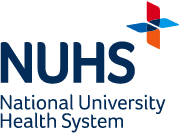Researchers at NUH are harnessing machine learning to map cancers,
offering a clearer view of how cells within tumours behave to design
and develop more effective treaments.
Issue 6 | September 2024

 Subscribe and ensure you don't miss the next issue!
Subscribe and ensure you don't miss the next issue!
What if, like a tourist effortlessly traversing unfamiliar terrain with the help of a reliable navigation app, we could map every cell within a tumour — enabling us to visualise and understand not just which cells are present, but also their precise locations and how they ‘talk’ to one another?
Researchers call this approach ‘spatial biology’. Dr Anand Jeyasekharan, Senior Consultant, Department of Haematology-Oncology, National University Cancer Institute, Singapore, is leveraging the technique to battle cancer, where advanced imaging equipment is used to analyse cancer with high molecular detail.
Mapping the future of cancer care
Spatial biology strips down biological systems to their key components, such as gene and protein expression, analysing them in three dimensions. It explores how cells and molecules are distributed within and interact across a tissue, what their environment indicates about their behaviour, and where they are located and why.
Consider embryonic development — a process in which humans and other organisms grow from a single cell. By deciphering how various cell types organise into complex tissue architectures, and subsequently, into a final form, scientists can decode the mechanisms through which embryos develop, uncovering insights into organ and tissue formation.
In the context of oncology, tumours are dynamic ecosystems composed of malignant and non-malignant cell types — cancer cells, stromal cells and immune cells — that evolve rapidly in response to various internal and external factors.
“Studying the body’s reaction to cancer cells is like observing a battlefield where two armies are programmed to annihilate each other,” says Dr Jeyasekharan. “Examining cells in their natural context and understanding cell-to-cell communication within tumours could help us detect tumours faster, deliver more accurate diagnoses and identify key targets for personalised anti-cancer drugs.”
AI provides a shot in the arm
Artificial intelligence (AI) is a crucial enabler in Dr Jeyasekharan’s spatial biology approach. “AI algorithms can process and analyse vast quantities of imaging data, identifying subtle patterns and correlations that might elude the human eye,” he adds. “It is indeed turning the traditional way of interpreting complex molecular data on its head, driving our understanding and treatment of cancer forward.”
Dr Jeyasekharan also underscores the significance of clinical research in advancing cancer treatment, from clinical trials to analysing historical data to understand and improve healthcare delivery. “We’re never satisfied with delivering standard treatment because it simply isn’t good enough. Some patients are cured, while others are not — we’re committed to increasing the chances of curing more people,” he says.
_________________________________________________________________________________________________________________________________________________________________________________
Like this article? Simply subscribe to make sure you don't miss the next issue of EnvisioningHealth!

| As a key institution of the National University Health System in Singapore, we deliver world-class clinical outcomes and patient experience, and transform patient care with innovative technologies. Our efforts in advancing technology and innovation in healthcare has been recognised in the world’s best smart hospitals ranking since 2021. We need your help and support to do better. Share your thoughts by participating in this online survey: https://for.sg/wbsh2026-survey |



















